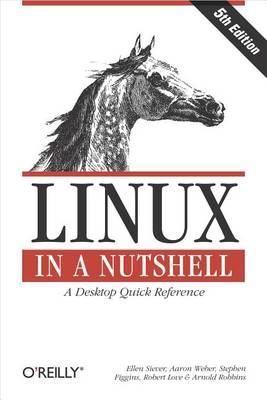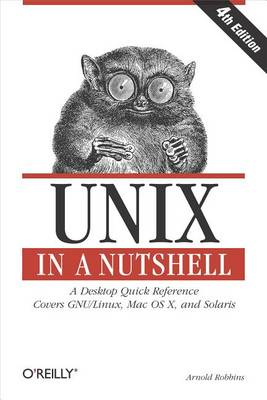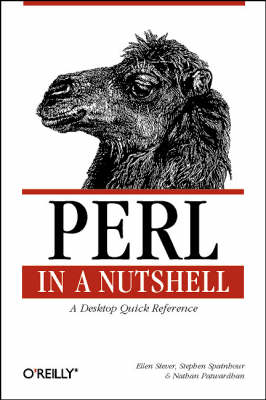In a Nutshell (O'Reilly)
4 total works
Linux in a Nutshell
by Ellen Siever, Aaron Weber, Stephen Figgins, Robert Love, and Arnold Robbins
Published 30 June 2003
Over the last few years, Linux has grown both as an operating system and a tool for personal and business use. Simultaneously becoming more user friendly and more powerful as a back-end system, Linux has achieved new plateaus: the newer filesystems have solidified, new commands and tools have appeared and become standard, and the desktop - including new desktop environments - have proved to be viable, stable, and readily accessible to even those who don't consider themselves computer gurus. Whether you're using Linux for personal software projects, for a small office or home office (often termed the SOHO environment), to provide services to a small group of colleagues, or to administer a site responsible for millions of email and web connections each day, you need quick access to information on a wide range of tools. This book covers all aspects of administering and making effective use of Linux systems. Among its topics are booting, package management, and revision control. But foremost in "Linux in a Nutshell" are the utilities and commands that make Linux one of the most powerful and flexible systems available.
Now in its fifth edition, "Linux in a Nutshell" brings users up-to-date with the current state of Linux. Considered by many to be the most complete and authoritative command reference for Linux available, the book covers all substantial user, programming, administration, and networking commands for the most common Linux distributions. Comprehensive but concise, the fifth edition has been updated to cover new features of major Linux distributions. Configuration information for the rapidly growing commercial network services and community update services is one of the subjects covered for the first time. But that's just the beginning. The book covers editors, shells, and LILO and GRUB boot options. There's also coverage of Apache, Samba, Postfix, sendmail, CVS, Subversion, Emacs, vi, sed, gawk, and much more. Everything that system administrators, developers, and power users need to know about Linux is referenced here, and they will turn to this book again and again.
Now in its fifth edition, "Linux in a Nutshell" brings users up-to-date with the current state of Linux. Considered by many to be the most complete and authoritative command reference for Linux available, the book covers all substantial user, programming, administration, and networking commands for the most common Linux distributions. Comprehensive but concise, the fifth edition has been updated to cover new features of major Linux distributions. Configuration information for the rapidly growing commercial network services and community update services is one of the subjects covered for the first time. But that's just the beginning. The book covers editors, shells, and LILO and GRUB boot options. There's also coverage of Apache, Samba, Postfix, sendmail, CVS, Subversion, Emacs, vi, sed, gawk, and much more. Everything that system administrators, developers, and power users need to know about Linux is referenced here, and they will turn to this book again and again.
Perl in a Nutshell is a comprehensive reference guide to the Perl programming language. This book covers all the core features of the language. It ranges widely through the Perl programmer's universe, gathering together in convenient form a wealth of information about Perl itself and its application to CGI scripts, network programming, database interaction, and graphical user interfaces. It also gives detailed coverage about using Perl within a Win32 environment. This book assembles more information about the language in one place than any other reference work. Here are just some of the topics covered in the book: Basic language reference Introduction to using Perl modules Perl and CGI: CGI basics, CGI.pm, mod_perl DBI, the database-independent API for Perl Sockets programming in Perl LWP, the library for World Wide Web programming in Perl The Net::* modules pTk, the Tk extension to Perl As part of the successful "in a Nutshell" series of books from O'Reilly & Associates, Perl in a Nutshell is for readers who want a single reference for all their needs.
Webmaster in a Nutshell, 3rd Edition
by Stephen Spainhour and Robert Eckstein
Published 1 December 2002



